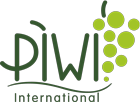Source: International DWV Congress April 13, 2022
Background – strong downy mildew infections in viticulture in many European countries Due to climate change, viticulture in various European countries is increasingly being confronted with extreme weather events and weather conditions that have been stable over a long period of time. The consequences are, on the one hand, more or less long phases of drought (cf. vintage 2015, 2018, 2019 and 2020) and on the other hand - as last year, last year led to the fact that primarily in wine-growing regions of Central and Southern Europe - long phases of heavy precipitation and long-lasting moisture.
The latter (e.g. in Switzerland (CH), in Champagne (F), Burgundy (F), Jura (F), Bordeaux (F), in South Tyrol (I)) and in all growing areas of the Federal Republic of Germany In many vineyards there are severe downy mildew infections, sometimes with extreme yield losses. Some vineyards were not passable, which made it difficult to carry out the necessary plant protection measures. The constant driving destroys the ground and leads to driving insecurity in the wet and increased fuel consumption. As a washable contact agent, copper preparations in plant protection do not offer sufficient protection against downy mildew infections in years with long-lasting rainfall. Sustainable soil protection in particular should be taken into account. Organic viticulture in particular faces a major challenge in years like this.
Challenge for the individual wine-growing companies - individual concern high
In 2016, many farms had to cope with a loss of earnings and thus economic losses, 2021 again meant significant economic cuts for the affected farms due to downy mildew infections. In the long term, yield losses due to limited options against plant pathogens - eg lack of preparations, unsustainable soil, limited capacity - are economically unacceptable for the farms in two out of six years.
Challenge for the wine industry as a whole in terms of sustainability, climate change and the implementation of political goals
The interest in the profession is fundamentally very high in converting to organic farming. At the same time, the economic risks are seen due to the limited options for action due to the difficult framework conditions, especially in organic viticulture, with regard to the use of pesticides. The large-scale planting of new, fungus-resistant grape varieties is part of a medium- and long-term strategy. Sufficient planting material must be available for this. Furthermore, sales of wines produced on the basis of more fungus-resistant grape varieties should also be developed. A conversion of grape varieties takes 30 to 40 years. Old vines in particular are important for the quality of the wine. These circumstances affect the interest as well as the ultimate readiness for organic farming. Due to the changed framework conditions, in particular due to the consequences of climate change, the economic viability and profitability of organic viticulture are not always given, which is why reverse conversions are to be expected. In addition, the number of companies aiming for or applying for a conversion will probably be less than expected or even decrease. This overshadows the successes of organic viticulture in recent decades. The EU target of a share of organic farming of 25 % by 2030 (2020: EU-wide 9.1 % of agricultural land; source: EuroStat) is probably a long way off. We have to pave the way to organic viticulture and show the companies an economically sustainable perspective. The political goals have been set - ways in which organic viticulture can make its contributions must be further developed. Viticulture is also willing to make its contribution to the European organic farming target if the framework conditions are right.
In order to achieve the political goals, we need more options for action in plant protection - making organic viticulture more future-proof
The aim is to secure the future of European organic viticulture in terms of profitability and profitability and thus to achieve the goal of expanding the area under organic wine to 25 % of vineyards by 2030. This means increasing the proportion of fungus-resistant grape varieties, further improving forecasting models and, if necessary, designing the options for action for organic viticulture in plant protection in such a way that organic viticulture can also be economically successful in all winegrowing regions. We see this as a central basic condition in order to be able to achieve the organic farming share of 25 % of the vineyard area aimed for by the EU and to secure the future of organic viticulture throughout Europe. The potential of organic viticulture should be used for companies and for the cultural landscapes in Europe.
Short, medium and long-term strategies - more research needed, get support in Brussels - each with their partners.
We see the following solutions and are open to other suggestions and solutions.
• We demand a sensible addition to the options for action in organic viticulture in terms of plant protection. This can be done through a limited and time-limited approval of phosphonates in organic viticulture or linked to climatic conditions. At the same time, this makes a contribution to copper optimization and minimization. We therefore suggest a re-examination of existing and new solutions at EU level.
• For this holistic approach, we also need the increased cultivation of marketable, fungus-resistant grape varieties as well as the establishment and further improvement of forecast models in plant protection.
• We strive to harmonize soil and plant protection, as well as economic and ecological sustainability for the companies and the environment.
• We recommend expanding research into sustainable viticulture in order to be able to access a full range of options for action in the medium and long term, to promote the development of new varieties and approvals of new preparations and to get them off the ground more quickly.
• We see targeted further training and practical training as a major task for everyone involved.
2022-04-13_DWV-Kongress_Weinbau.Zukunft.Donauraum_Resolution_Zukunft-des-Bioweinbau.pdf

